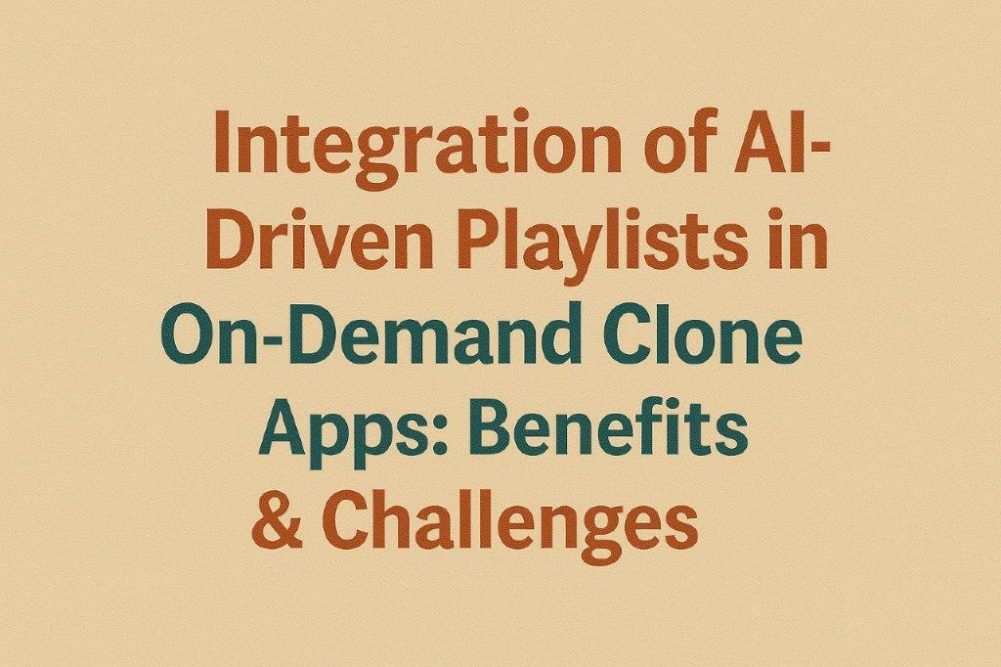On-demand app industry encompasses a wide range of services ranging from video as well as music streaming to fitness platforms & personalized learning. The businesses experience an extreme competition and a persistent focus on user engagement. In “on demand app” landscape, standard experiences are quickly abandoned. The growing integration of AI-based Playlists is rising as an important differentiator for clone apps who are seeking to compete with major industry giants. Further, these smart suggestion systems move beyond easy static lists and instead use machine learning to customize content in real-time based on user behavior. Furthermore, while offering various benefits in user retention and personalization, their application in clone apps presents unique operational as well as technical challenges.
The Transformative Benefits of AI-Driven Playlists
1. Hyper-Personalization and Enhanced User Experience
The main benefit offered is the shift from a passive content library to an active as well as personalized experience. AI algorithms analyze or evaluate an array of data points which include skips, past consumption history, location, time of day as well as implicit signals like scroll speed.
- Taste Clusters: AI usually group users with identical consumption patterns which allows the app to suggest content that is trending within that explicit “taste cluster”.
- Contextual Curation: A streaming music clone uses AI to detect if a user is commuting and instantly switch from a “Workout Mix” to a ” Relaxation” playlist.
2. Increased User Retention and Lifetime Value (LTV)
In on-demand sector, content discovery fatigue is a key driver of churn. When users face difficulties in finding something new or relevant, they leave. AI-driven playlists help in solving the discovery problem proactively.
- The “Stickiness” Factor: AI helps in increasing user retention by constantly offering surprising and satisfying content. The tailored experience offers extensive benefits which may be difficult for competitors to duplicate without any similar data and algorithms.
- Deepening Engagement: Playlists can be designed in a manner which facilitates continuous engagement instead of just consumption, such as suggesting a related content series or even recommending user-generated content, which in turn helps in increasing the average session duration as well as overall LTV.
3. Optimized Content Strategy and ROI
AI is considered to be an important feedback loop for creating as well as acquiring content. By assessing which recommended content performs the best, the app can gain clear, data-backed guidance.
- Gap Identification: AI possess the ability to quickly detect content gaps where user interest is high but available content is low, which in turn helps in directing the platform’s content acquisition team on what to generate or license next.
- Niche Market Validation: For smaller clone apps, AI can assist in validating the existence as well as profitability of hyper-niche markets, which enables them to target specific underserved communities effectively, instead of directly competing with the giants that are prevalent on mainstream content.
Significant Challenges in Implementation
The clone apps face severe obstacles in successfully implementing and maintaining AI-driven features.
1. Data Scarcity and Quality
AI models accuracy is dependent on the quality of data they are trained on. Clone apps, especially new ones, suffer from below mentioned problems.
- Insufficient Initial Data: The apps which lack the historical interaction data which means the app without established users, create challenges for training the complex machine learning models effectively. Additionally, the initial recommendations will be poor, potentially driving early users away.
- Data Storage system: Collecting and cleaning diverse data which include demographics, viewing history, device type, emotional feedback from various sources into a single, functional format for the AI engine, requires significant infrastructure and expertise.
2. Technical Complexity and Infrastructure Cost
Developing as well as running a robust, real-time AI suggestion engine is technically demanding and expensive.
- Computational Power: Real-time recommendations require low-latency processing for large datasets, which in turn drives need for powerful cloud computing infrastructure which include GPUs, TPUs as well as specialized databases.
- Talent Gap: Implementing collaborative filtering, deep learning models and others requires specialized data scientists as well as machine learning engineers, which is both rare and expensive.
Conclusion: A Strategic Investment in Intelligence
The integration of AI-driven playlists represents a non-negotiable step toward modern relevance for on-demand clone apps. It provides key features such as hyper-personalization, superior user retention, and content intelligence. However, the app clone faces significant challenges, such as initial barrier of data scarcity, the high costs of specialized infrastructure and talent, as well as the critical need to mitigate algorithmic bias.
Further, to effectively navigating these hurdles requires AI engine as the intelligence layer of the business. For clone apps to truly compete they must make a dedicated, long-term investment in building a sustainable, ethical, and continuously learning recommendation system. Thus, transforming offering from a mere clone into a genuinely intelligent and vital user experience.
